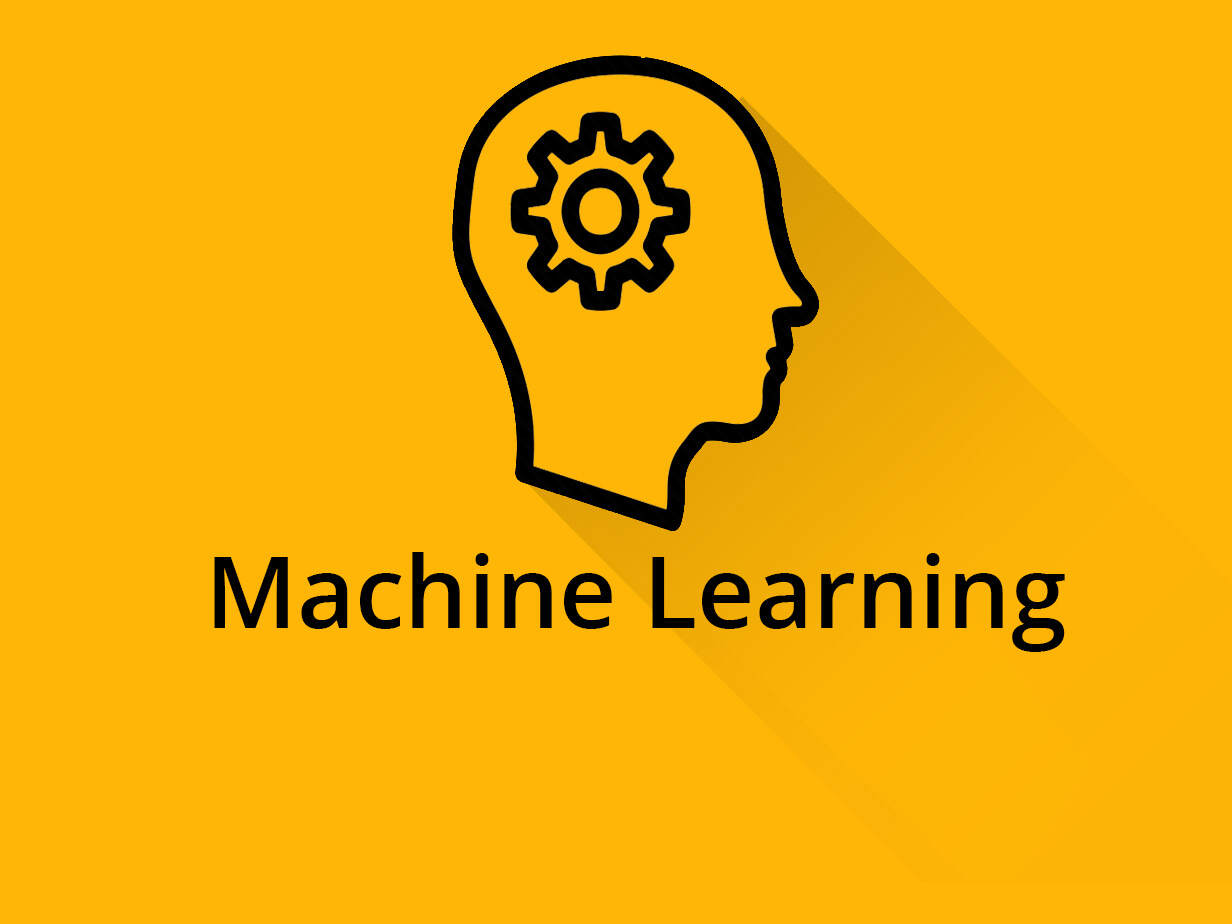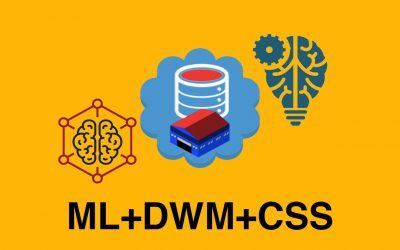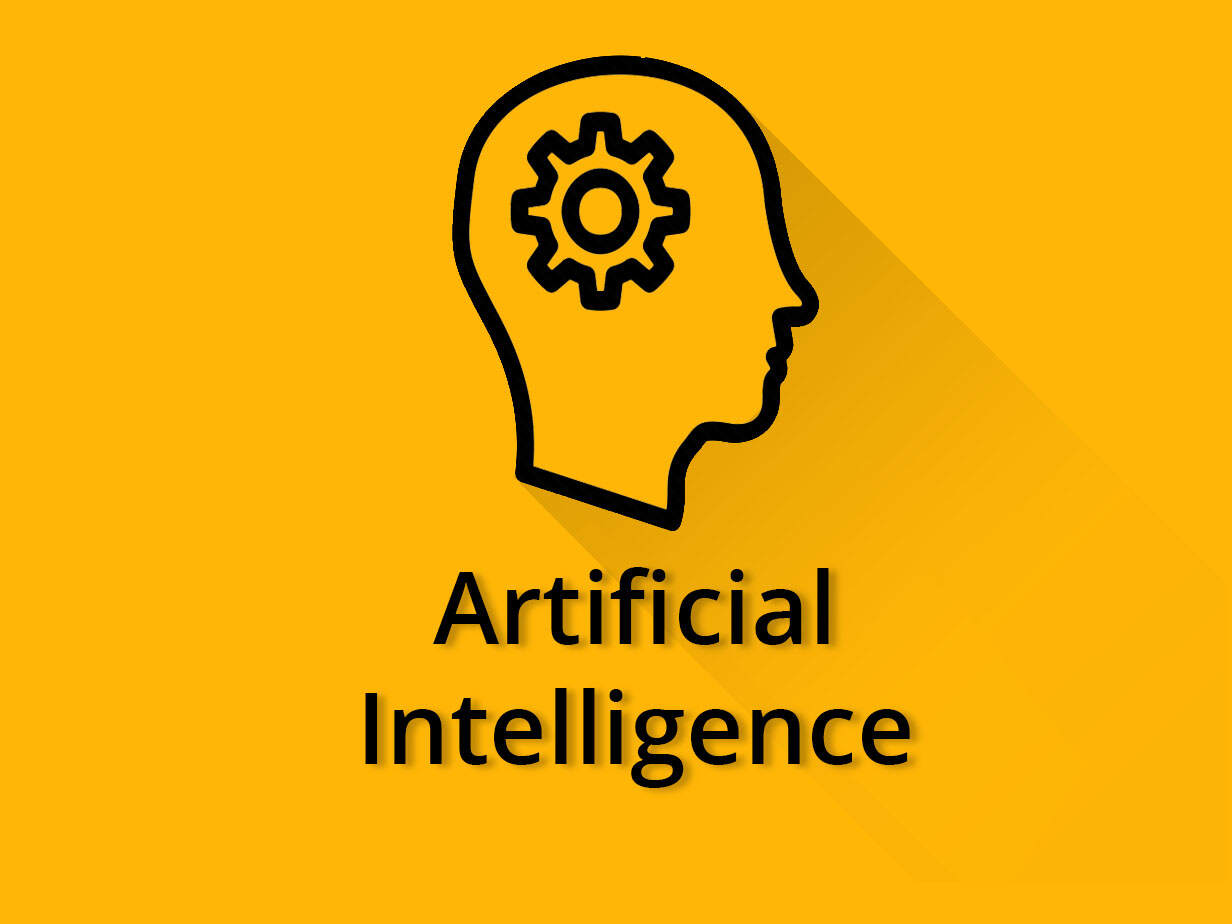Machine Learning
Machine Learning is semester 6 subject of final year of computer engineering in Mumbai University. Prerequisite for studying this subject are Data Structures, Basic Probability and Statistics, Algorithms.
Module Introduction to Machine Learning consists of the following subtopics, Types of Machine Learning, Issues in Machine Learning, Application of Machine Learning, and Steps in developing a Machine Learning Application. Module Introduction to Neural Network Introduction consists of the following subtopics Fundamental concept Evolution of Neural Networks Biological Neuron, Artificial Neural Networks, NN architecture, Activation functions, McCulloch-Pitts Model. Machine learning (ML) is the study of computer algorithms that improve automatically through experience. It is seen as a part of artificial intelligence. Machine learning algorithms build a model based on sample data, known as “training data”, in order to make predictions or decisions without being explicitly programmed to do so. Machine learning algorithms are used in a wide variety of applications, such as email filtering and computer vision, where it is difficult or unfeasible to develop conventional algorithms to perform the needed tasks.
Machine learning is a method of data analysis that automates analytical model building. It is a branch of artificial intelligence based on the idea that systems can learn from data, identify patterns and make decisions with minimal human intervention. Supervised learning. In this type of machine learning, data scientists supply algorithms with labeled training data and define the variables they want the algorithm to assess for correlations. Both the input and the output of the algorithm is specified. Unsupervised learning. This type of machine learning involves algorithms that train on unlabeled data. The algorithm scans through data sets looking for any meaningful connection. Both the data algorithms train on and the predictions or recommendations they output are predetermined. Semi-supervised learning in this approach to machine learning involves a mix of the two preceding types. Data scientists may feed an algorithm mostly labeled training data, but the model is free to explore the data on its own and develop its own understanding of the data set. Reinforcement learning is typically used to teach a machine to complete a multi-step process for which there are clearly defined rules. Data scientists program an algorithm to complete a task and give it positive or negative cues as it works out how to complete a task. But for the most part, the algorithm decides on its own what steps to take along the way.
Module Introduction to Optimization Techniques consists of the following subtopics Derivative based optimization- Steepest Descent, Newton method. Derivative free optimization- Random Search, Down Hill Simplex. Learning with Regression and trees learning with Regression Linear Regression, Logistic Regression. Learning with Trees: Decision Trees, Constructing Decision Trees using Gini Index, Classification and Regression Trees (CART). Module Learning with Classification and clustering consists of the following subtopics Classification consists of Rule based classification, classification by Bayesian Belief networks, Hidden Markov Models. Support Vector Machine: Maximum Margin Linear Separators, Quadratic Programming solution to finding maximum margin separators, Kernels for learning non-linear functions. Clustering consists of Expectation Maximization Algorithm, Supervised learning after clustering, Radial Basis functions. Dimensionality Reduction consists of Dimensionality Reduction Techniques, Principal Component Analysis, Independent Component Analysis, Single value decomposition.
Suggested Texts Books for machine learning by Mumbai University are as follows Peter Harrington Machine learning in Action, DreamTech Press. Ethem Alpaydın, Introduction to Machine Learning, MIT Press,Tom M.Mitche Machine Learning McGraw Hill,Stephen Marsland, Machine learning an Algorithmic Perspective CRC Press. J.-S.R.Jang “Neuro-Fuzzy and Soft Computing” PHI 2003, Samir Roy and Chakraborty, Introduction to soft computing, Pearson Edition,Kevin P. Murphy, Machine Learning A Probabilistic Perspective. Suggested Reference Books for machine learning by Mumbai University are as follows Han Kamber, Data Mining Concepts and Techniques, Morgann Kaufmann Publishers, Margaret.H.Dunham, Data Mining Introductory and Advanced Topics, Pearson Education. Objectives of Course machine learning is to introduce students to the basic concepts and techniques of Machine Learning. To become familiar with regression methods, classification methods, clustering methods. To become familiar with Dimensionality reduction Techniques. Outcomes of Course machine learning is Students will be able to Gain knowledge about basic concepts of Machine Learning Identify machine learning techniques suitable for a given problem. Solve the problems using various machine learning techniques. Apply Dimensionality reduction techniques. Design application using machine learning techniques.
Prepare For Your Placements: https://lastmomenttuitions.com/courses/placement-preparation/
![]()
/ Youtube Channel: https://www.youtube.com/channel/UCGFNZxMqKLsqWERX_N2f08Q
Follow For Latest Updates, Study Tips & More Content!
Course Features
- Lectures 56
- Quiz 0
- Duration 50 hours
- Skill level All levels
- Language Hindi
- Students 112
- Assessments Yes
Curriculum
- 8 Sections
- 56 Lessons
- 52 Weeks
- Course Overview/*! CSS Used from: Embedded */ *, ::after, ::before { box-sizing: border-box; border-width: 0; border-style: solid; border-color: #e5e7eb; } ::after, ::before { --tw-content: ''; } h2 { font-size: inherit; font-weight: inherit; } a { color: inherit; text-decoration: inherit; } h2, p { margin: 0; } :disabled { cursor: default; } *, ::before, ::after { --tw-border-spacing-x: 0; --tw-border-spacing-y: 0; --tw-translate-x: 0; --tw-translate-y: 0; --tw-rotate: 0; --tw-skew-x: 0; --tw-skew-y: 0; --tw-scale-x: 1; --tw-scale-y: 1; --tw-scroll-snap-strictness: proximity; --tw-ring-offset-width: 0px; --tw-ring-offset-color: #fff; --tw-ring-color: rgb(59 130 246 / 0.5); --tw-ring-offset-shadow: 0 0 #0000; --tw-ring-shadow: 0 0 #0000; --tw-shadow: 0 0 #0000; --tw-shadow-colored: 0 0 #0000; } .mx-auto { margin-left: auto; margin-right: auto; } .mb-2 { margin-bottom: 0.5rem; } .mb-4 { margin-bottom: 1rem; } .mb-6 { margin-bottom: 1.5rem; } .mr-2 { margin-right: 0.5rem; } .max-w-screen-sm { max-width: 640px; } .max-w-screen-xl { max-width: 1280px; } .rounded-lg { border-radius: 0.5rem; } .bg-primary-700 { --tw-bg-opacity: 1; background-color: rgb(29 78 216 / var(--tw-bg-opacity)); } .bg-white { --tw-bg-opacity: 1; background-color: rgb(255 255 255 / var(--tw-bg-opacity)); } .px-4 { padding-left: 1rem; padding-right: 1rem; } .px-5 { padding-left: 1.25rem; padding-right: 1.25rem; } .py-2.5 { padding-top: 0.625rem; padding-bottom: 0.625rem; } .py-8 { padding-top: 2rem; padding-bottom: 2rem; } .text-center { text-align: center; } .text-4xl { font-size: 3rem; line-height: 2.5rem; } .text-sm { font-size: 0.875rem; line-height: 1.25rem; } .font-extrabold { font-weight: 800; } .font-light { font-weight: 300; } .font-medium { font-weight: 500; } .leading-tight { line-height: 1.25; } .tracking-tight { letter-spacing: -0.025em; } .text-gray-500 { --tw-text-opacity: 1; color: rgb(107 114 128 / var(--tw-text-opacity)); } .text-gray-900 { --tw-text-opacity: 1; color: rgb(17 24 39 / var(--tw-text-opacity)); } .text-white { --tw-text-opacity: 1; color: rgb(255 255 255 / var(--tw-text-opacity)); } .hover\:bg-primary-800:hover { --tw-bg-opacity: 1; background-color: rgb(30 64 175 / var(--tw-bg-opacity)); } .focus\:outline-none:focus { outline: 2px solid transparent; outline-offset: 2px; } .focus\:ring-4:focus { --tw-ring-offset-shadow: var(--tw-ring-inset) 0 0 0 var(--tw-ring-offset-width) var(--tw-ring-offset-color); --tw-ring-shadow: var(--tw-ring-inset) 0 0 0 calc(4px + var(--tw-ring-offset-width)) var(--tw-ring-color); box-shadow: var(--tw-ring-offset-shadow), var(--tw-ring-shadow), var(--tw-shadow, 0 0 #0000); } .focus\:ring-primary-300:focus { --tw-ring-opacity: 1; --tw-ring-color: rgb(147 197 253 / var(--tw-ring-opacity)); } @media (min-width: 640px) { .sm\:py-16 { padding-top: 4rem; padding-bottom: 4rem; } } @media (min-width: 768px) { .md\:text-lg { font-size: 1.5rem; line-height: 1.75rem; } } @media (min-width: 1024px) { .lg\:px-6 { padding-left: 1.5rem; padding-right: 1.5rem; } } .imgdata { width: 35% } @media (max-width: 767px) { .imgdata { width: 40% } } .course-payment { display: none !important; } .thim-course-landing-button { display: none !important; }0
- Introduction to Machine Learning4
- Learning with Regression and Trees5
- Learning with Classification and clustering13
- 4.1Bayes Theorem and Naive Bayes Classifier11 Minutes
- 4.2Bayesian Belief Network9 Minutes
- 4.3Markov Models8 Minutes
- 4.4Hidden Markov Model11 Minutes
- 4.5Support Vector Machine10 Minutes
- 4.6K mean Clustering Algorithm12 Minutes
- 4.7Apriori Algorithm with solved Example12 Minutes
- 4.8Agglomerative Algorithm with solved Example Part #113 Minutes
- 4.9Agglomerative Algorithm with solved Example Part #25 Minutes
- 4.10FP Tree Algorithm with Solved Example15 Minutes
- 4.11Hidden Markov model Basic Part 110 Minutes
- 4.12Hidden Markov model Basic Part 27 Minutes
- 4.13Hidden Markov model Basic Part 38 Minutes
- Dimensionality Reduction5
- Introduction to Neural Network13
- 6.1Introduction to ANN and structure of ANN6 Minutes
- 6.2Activation functions in ANN (Discrete and Continuous)4 Minutes
- 6.3Neural Network Architecture5 Minutes
- 6.4Linear Separability4 Minutes
- 6.5Mc-Culloch-Pitts Neural Model3 Minutes
- 6.6Hebbs Network/Hebbian Learning (with solved example)17 Minutes
- 6.7Winners-Takes-All5 Minutes
- 6.8Self Organizing Maps and KSOMs10 Minutes
- 6.9Linear Vector Quantization (LVQs)5 Minutes
- 6.10Derivation of Unipolar Continuous Function.7 Minutes
- 6.11Derivation of Bipolar Continuous Function11 Minutes
- 6.12Perceptron Learning (with solved example)11 Minutes
- 6.13Backpropagation Network (with solved example)19 Minutes
- Introduction to Optimization Techniques7
- Notes9
Leave A Reply
You must be logged in to post a comment.




![Python Zero to Hero [ Learn to Make Industry Level Project From Scratch ]](https://www.informaltuitions.in/wp-content/uploads/2021/01/VIVA-QUESTION-400x250.png)
![Python Zero to Hero Covering Web Development and Machine Learning + [Capstone Project From Scratch Included]](https://www.informaltuitions.in/wp-content/uploads/2020/09/dsfdg-400x250.jpg)


5 Comments
Can you advise if this is all in English please?
no sir its in hindi
I am registered in machine learning course.I tried to open your pdf notes but error shows.Please send me all pdf files on my mail id .
It shows click on the blue text below to download the notes as soon as I click on it 404 error is displayed. Please help me out here.
whatsapp us 7038604912